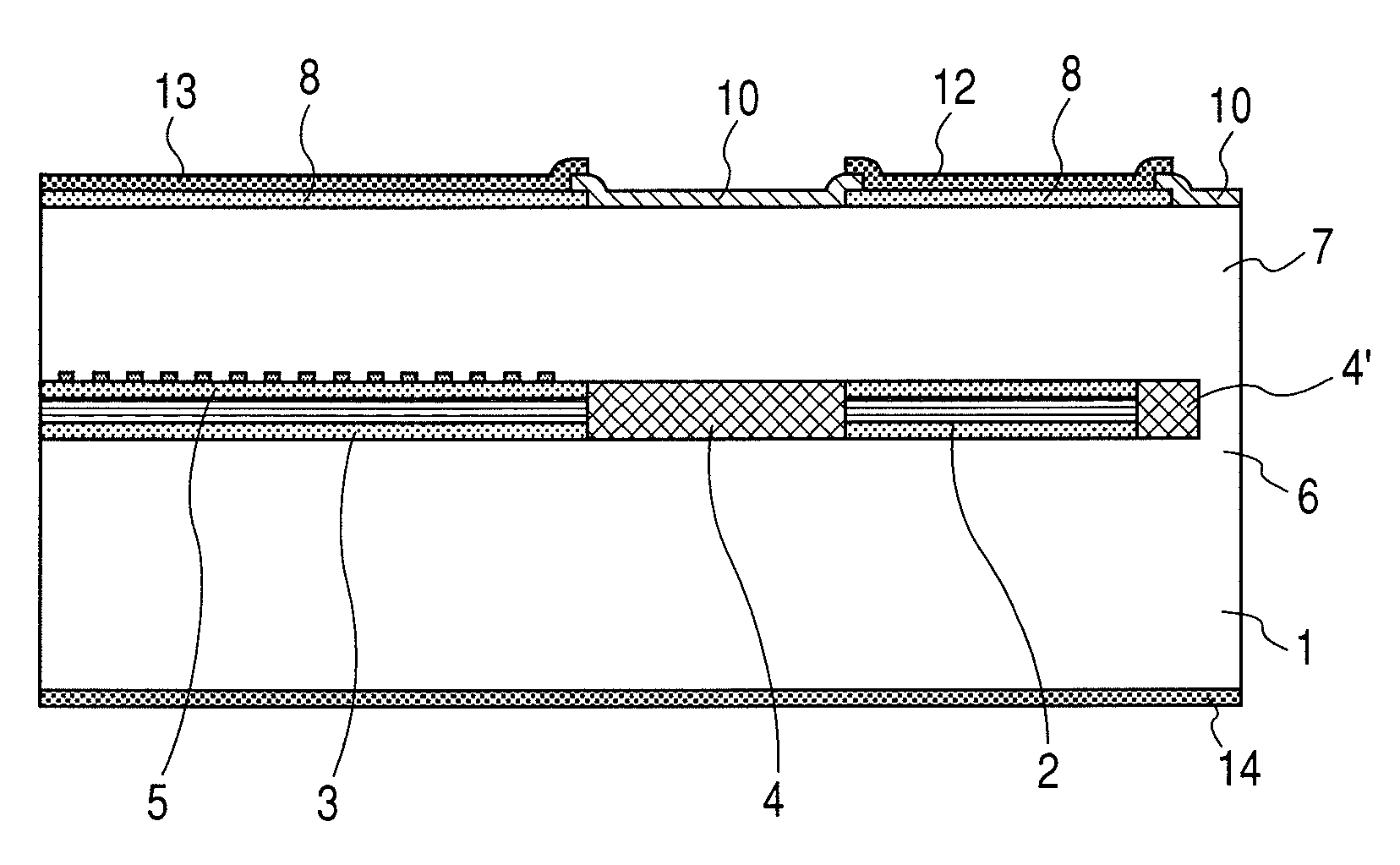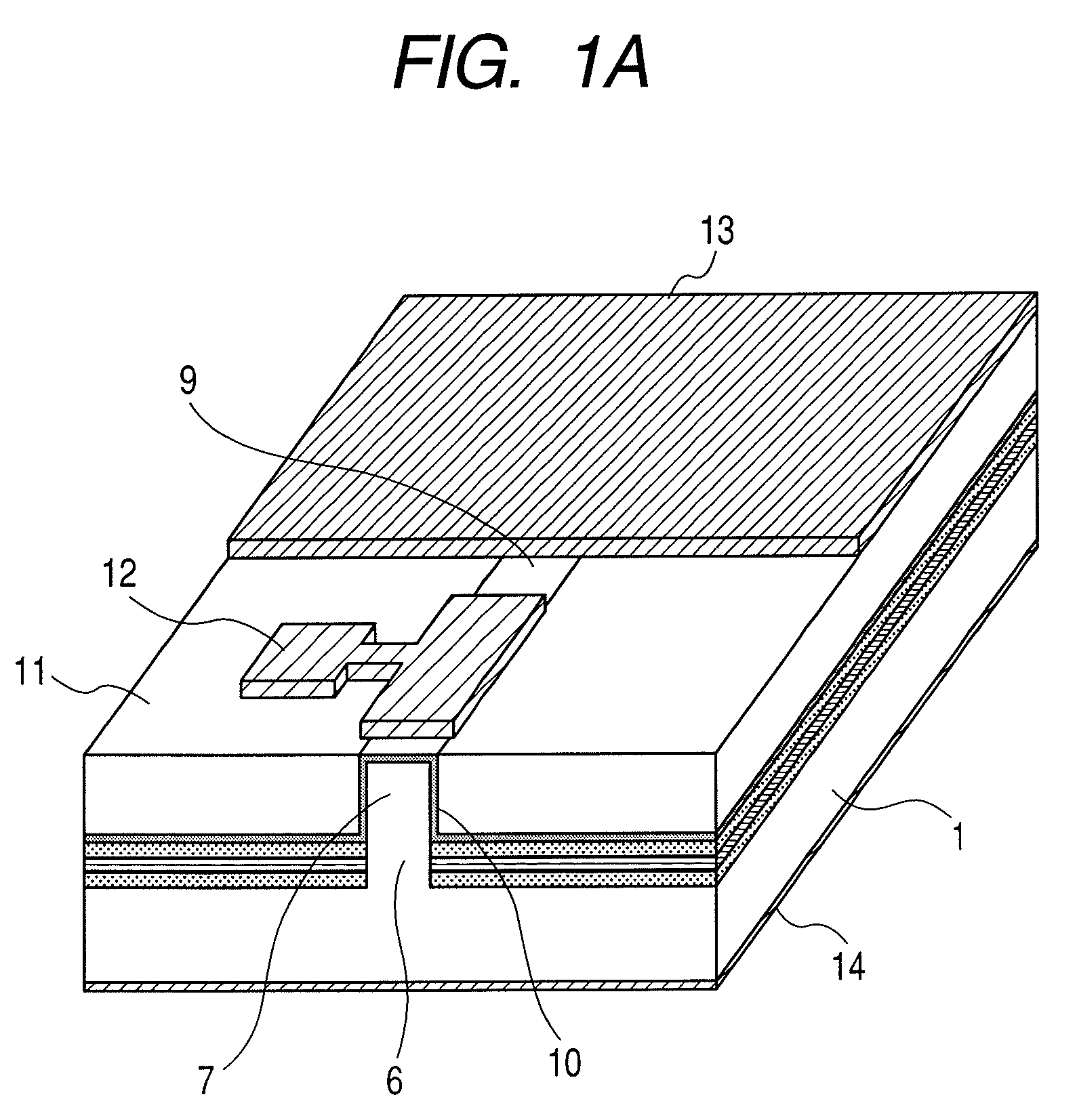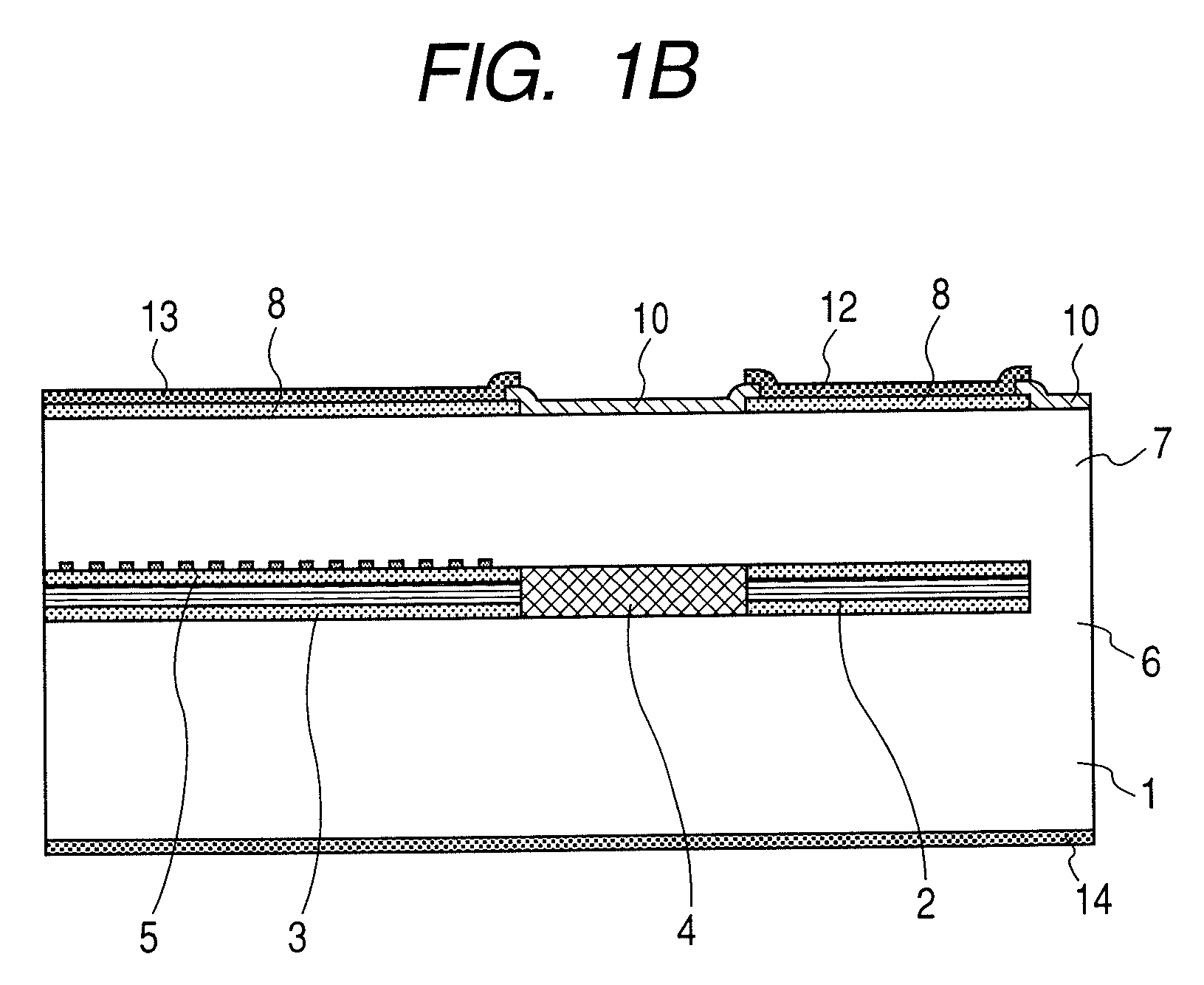Semiconductor optical device and manufacturing method thereof
a technology of semiconductors and optical devices, which is applied in the direction of optical elements, semiconductor lasers, instruments, etc., can solve problems such as deterioration of transmission properties, and achieve the effects of reducing size, excellent properties, and less chirping
- Summary
- Abstract
- Description
- Claims
- Application Information
AI Technical Summary
Benefits of technology
Problems solved by technology
Method used
Image
Examples
first embodiment
[0046]This embodiment concerns an RWG-EA / DFB(DBR).
[0047]Manufacturing steps of a semiconductor optical integrated device applied with the invention are to be described with reference to FIG. 5.
[0048]However, the drawings are only for description of this embodiment and the size of the drawing and the reduced scale described in this embodiment do not always agree to each other.
[0049]A quantum well structure 2 comprising an InGaAlAs-based material as an electro-absorption optical modulation region is formed by an MOCVD method above an n-InP type substrate 1 (FIG. 5A). For the quantum well structure, an optical confinement structure sufficient for extinction can be formed by alternately stacking quantum wells and barrier layers by about 10 layers. Successively, etching is conducted as far as the surface of the n-InP substrate 1 while leaving a predetermined length of an electro-absorption optical modulator (FIG. 5B). Further, the etching technique for the semiconductor layer having In, ...
second embodiment
[0062]In the ridge waveguide type semiconductor optical integrated device described in the first embodiment, the optical feed back at the light emitting edge can be further decreased by forming a curved waveguide 9′ having an optical axis thereof in a curved shape from the vicinity of the junction portion between the semiconductor laser portion 3 and the optical waveguide 4 to the light emitting edge upon forming the mesa waveguide 9 described in FIG. 5I. FIG. 6 shows a perspective view of a curved waveguide type semiconductor optical integrated device. Since the method of manufacturing the curved waveguide type semiconductor optical integrated device is not different at all from the method described for FIG. 5A to FIG. 5L except for the shape of the waveguide 9′ formed in FIG. 5I as described above, detailed description is to be omitted.
[0063]Further, since the operation method of the curved waveguide type semiconductor integrated device described in the second embodiment is not di...
third embodiment
[0064]This embodiment concerns a BH type EA / DFB(DBR).
[0065]FIG. 7A shows a perspective view and FIG. 7B shows a perspective view showing a cross section taken along a central portion according to an embodiment of a semiconductor optical integrated device applied with the invention.
[0066]In this case, the drawing for the manufacturing step of the device shown in FIG. 5 of the first embodiment is to be omitted.
[0067]However, the drawings are only for description of this embodiment and the size of the drawing and the reduced scale described in this embodiment do not always agree to each other.
[0068]A quantum well structure 2 comprising an InGaAlAs-based material as an electro-absorption optical modulator is formed by an MOCVD method above an n-InP type substrate 1. For the quantum well structure, an optical confinement structure sufficient for extinction can be formed by alternately stacking quantum wells and barrier layers by about 10 layers. Successively, etching is conducted as far ...
PUM
| Property | Measurement | Unit |
|---|---|---|
| reflectance | aaaaa | aaaaa |
| refractive index | aaaaa | aaaaa |
| thickness | aaaaa | aaaaa |
Abstract
Description
Claims
Application Information
 Login to View More
Login to View More - R&D
- Intellectual Property
- Life Sciences
- Materials
- Tech Scout
- Unparalleled Data Quality
- Higher Quality Content
- 60% Fewer Hallucinations
Browse by: Latest US Patents, China's latest patents, Technical Efficacy Thesaurus, Application Domain, Technology Topic, Popular Technical Reports.
© 2025 PatSnap. All rights reserved.Legal|Privacy policy|Modern Slavery Act Transparency Statement|Sitemap|About US| Contact US: help@patsnap.com



